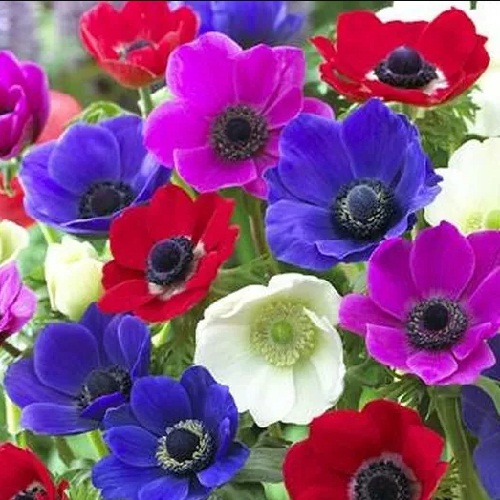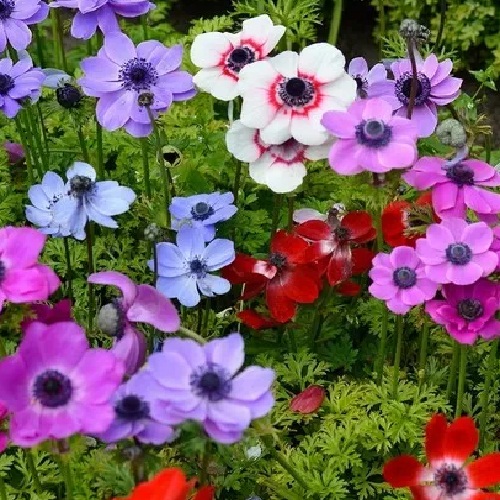
Himalayan Meconopsis Poppy - Tibetan Poppy, Mixed Colors
|
Gorgeous large, vibrant colored petals adorning wonderfully green foliage, the Himalayan Meconopsis poppy is a species of flowering plant in the family Papaveraceae. It was first formally named for western science in 1912 by the British officer Lt. Col. Frederick Marshman Bailey. Wikipedia
Scientific name: Meconopsis betonicifolia
Genus: Meconopsis
Family: Papaveraceae
These rare flowering plants are known for their vibrant, showy petals and were actually considered a myth before they were discovered in 1933 by the acclaimed botanist George Sheriff during an expedition to a remote region in eastern Bhutan.
Indigenous cultures in many Asian countries highly value Meconopsis species. For example, the flowers of M. aculeata are used for the treatment of asthma, pain, fever and cough by local inhabitants of Chamba and Lahaul-Spiti, Himachal Pradesh and Bageshwar, Uttarakhand, India (Bahukhandi et al., 2019).
This clump-forming perennial has strikingly unusual, delicate bowl-shaped flowers with yellow centers. The blooms develop in succession on the tall, leafy, bristly stems (that can grow up to 4 feet in height) through late spring and early summer and they pack a unique punch of color in shady borders. While Himalayan poppies can be low-maintenance if they are provided with exactly the right type of environment, not every garden will be able to offer them the conditions they need to thrive.
Growing Poppy
Plant in fertile, moist, and well-drained soil, and filtered light.
Keep consistently moist during the growing season and dry in the winter when dormant.
Avoid high temperatures, these plants thrive in areas with cool summers.
Feed with a light dose of slow-release granular fertilizer during the growing season.
Light
In their native habitat, Himalayan poppies would grow on damp woodland floors where they would receive dappled light. These plants can't survive if they are exposed to too much intense sunlight. They prefer a partial shade position with bright but indirect light.
If you live in a region that experiences very mild summer temperatures, they may still manage in a more sunny position, but, ideally, this would only expose them to direct morning sun.
Soil
Himalayan poppies have very particular soil requirements. To thrive, they need a moist but well-drained type that is rich in organic matter. Loamy soils work best, and enthusiasts often enrich them with leaf matter to minimize the chance of stagnation and to conserve moisture.
They are also surprisingly sensitive to pH levels. A soil test is recommended before planting as they prefer a neutral to slightly acidic type. Too much alkalinity can impact on growth.
Water
Himalayan poppies need to be kept consistently moist throughout their growth period in the late spring and summer. In the winter, their preference is to be kept dry, so no supplemental watering is usually required.
Temperature and Humidity
Himalayan poppies won't be appropriate for growing in the southern states that are hot and humid. Temperate regions that don't have overly hot summers are best for these plants.
Fertilizer
If your soil hasn't been enriched sufficiently with manure, compost or leaf mold, you could apply a weak dose of slow-release granular fertilizer during the spring and summer growth period.

Copyright 2017-2025 Heirloomsnhybrids. All Rights Reserved


